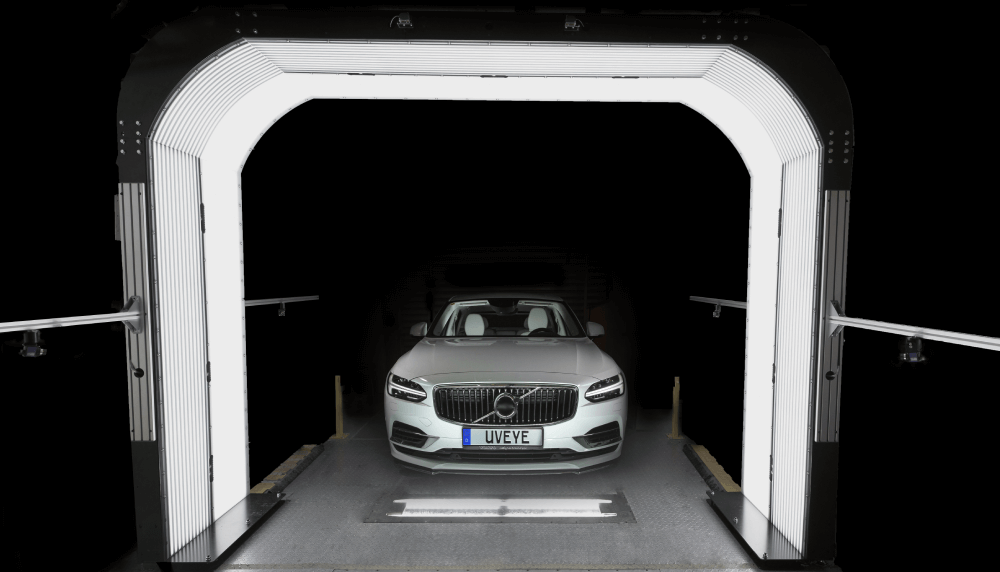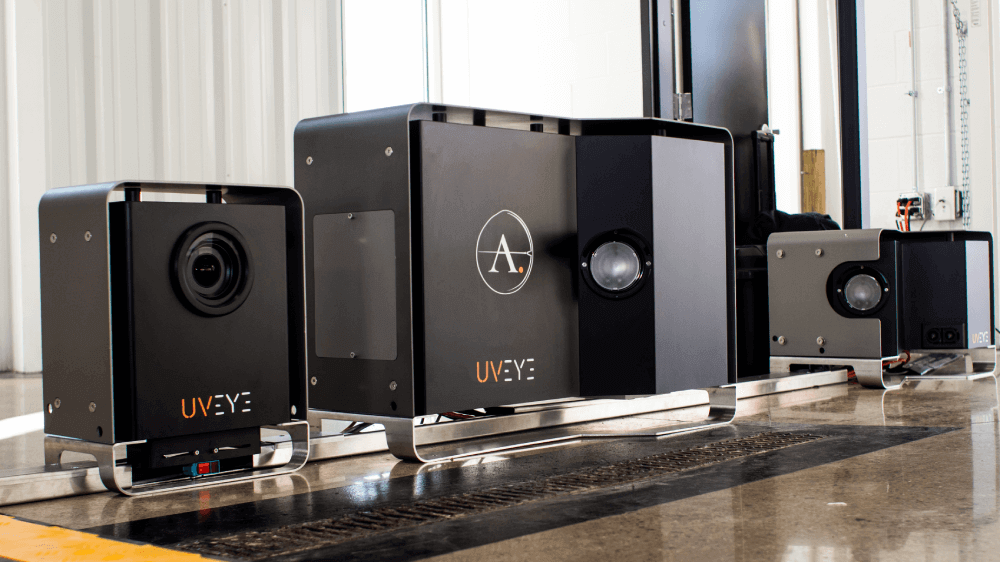For a car owner, maintenance, inspection, and repairs are a normal – sometimes aggravating – part of life. Honing in on the notoriously long wait times at some vehicle inspection sites, an Israeli tech startup aims to streamline the inspection process and shorten it with its automated vehicle inspection systems, which utilize artificial intelligence and machine learning technologies to detect fluid leaks, missing parts, tire defects, underbody damage, and more – in just seconds.
Swedish carmaker Volvo announced this month that it has partnered with the Israeli vehicle inspection systems developer, UVeye, to implement the company’s tech in the US at drive-through inspection stations on the East Coast.
Volvo will equip US dealers with these high-speed, camera-based systems, which will examine the vehicles and produce reports on the spot. The company aims to expand to include most of Volvo’s 280 independent retail locations across the US.

The automated vehicle inspection process “is significantly faster than time-consuming manual inspections,” Rick Bryant, vice president for sales operations at Volvo Car USA, said in a statement. This helps give retailers the ability to evaluate trade-ins quickly and cost-effectively, he said.
“Once a vehicle drives through the system, thousands of images are being taken around and below the vehicle and uploaded to the cloud where the analysis is done for detections such as scratches, leaks, dents, broken parts, and more. Within seconds the detection is being marked and reflected in the UVeye platform, which is web-based and projected on screens and tablets,” Yaron Saghiv, Chief Marketing Officer (CMO) at UVeye, tells NoCamels.
Founded in 2016, UVeye’s drive-through systems can detect external, structural, and mechanical defects instantly and identify missing parts or foreign objects, along the exterior of the vehicle and in its undercarriage. The system uses AI, sensors, and machine learning to create solutions for verticals that include automotive and homeland security industries. The company has said their scanning system can “increase transparency with vehicle owners and support the efficiency of the testing facility.” The company’s automotive solutions can be used at car dealerships or on assembly lines.
SEE ALSO: Cognata’s Sophisticated Simulation Tech Takes On Road Hazards, Rough Terrain
“At its core, the AI detects ‘anomalies.’ In other words, our deep-learning software knows what the ‘perfect’ undercarriage, tire, and body panel surface look like, so anything that doesn’t belong is highlighted in the vehicle report. Our team helps it to evolve, to differentiate between individual anomalies,” Saghiv explains.
UVeye and Volvo Cars have collaborated since 2019 when the automaker became a strategic investor in the company through the Volvo Cars Tech Fund. Companies like Toyota, Hyundai, and CarMax, a US-based used vehicle retailer have also invested in UVeye.
Sign up for our free weekly newsletter
SubscribeUVeye systems
Volvo retailers can install three basic UVeye inspection systems that focus on the underbody, wheels, and exterior of the vehicle. Helios is an underbody scanner that detects a wide range of problems from frame damage to oil leakage and corrosion. Artemis is a tire system that quickly identifies tire bran, basic specifications, air pressure, tread depth, sidewall damage, and even mismatched tires on a vehicle. Atlas, which focuses on the vehicle’s exterior, is a system that provides 360-degree scans of the exterior and detects damages such as dents, scratches, and rust on critical components such as bumpers, mirrors, door locks, grilles, and windows.

The company’s Atlas Lite is similar to the Atlas but it is said to be more dealership-friendly, according to the company. The Atlas Lite was first unveiled at NADA (The National Automobile Dealers Association) in Las Vegas earlier this month.
“During the vehicle scan, a vehicle is driven through the system at no more than 30 km/h (18 mph),” Saghiv explains. “The Helios scans the underbody, the Artemis scans the tires and wheels, and the Atlas Lite performs a 360-degree scan of the body, while simultaneously photographing the vehicle from various angles,” Saghiv explains.
By the time the vehicle pulls all the way through, a detailed report with detections and damage is highlighted and labeled. For example, the system knows the difference between rust and an oil leak and can determine the severity of each. “Our scans are immediate and take only a couple of seconds to be complete,” Saghiv adds.
It’s true that UVeye systems are “highly technical,” he says, “but we designed the vehicle reports and user interface to simplify all the complexities into digestible information for the customer. Just look at iPhones. They are undoubtedly highly complex pieces of technology, yet Apple is able to make them accessible and usable for everyone on the planet. Our vehicle reports are highly detailed but are incredibly easy to understand. This increases trust and transparency between service departments and customers.”
Volvo Cars sees opportunities for “all sorts of applications” for the new technology, including its use for vehicle trade-in appraisals. Car owners, for example, often think their trade-ins are in better condition than they really are, the company said in its statement.
“An automated system can help resolve problems,” Bryant says. “It shows the vehicle’s actual condition. The result is that customers will be able to see flaws such as a rusty tailpipe that they didn’t know about. And they’ll also know the retailer is being upfront with them.”
Related posts

Editors’ & Readers’ Choice: 10 Favorite NoCamels Articles

Forward Facing: What Does The Future Hold For Israeli High-Tech?

Impact Innovation: Israeli Startups That Could Shape Our Future




Facebook comments